Watch Facts
Quiz: 2024.03.21 Quiz (1960s, 70s & 80s)

18k gold case 38x45mm. This watch was Andy Warhol’s Collection. Beta 21 quartz movement. The Beta 21 quartz movement is an electronic movement used in wristwatches. Developed in the late 1960s by the Swiss consortium CEH, it features a high-frequency quartz crystal oscillator (8192 Hz) for enhanced accuracy. While it had a limited production run, the Beta 21 movement played a crucial role in the advancement of quartz watch technology, marking the start of the industry’s quartz revolution.
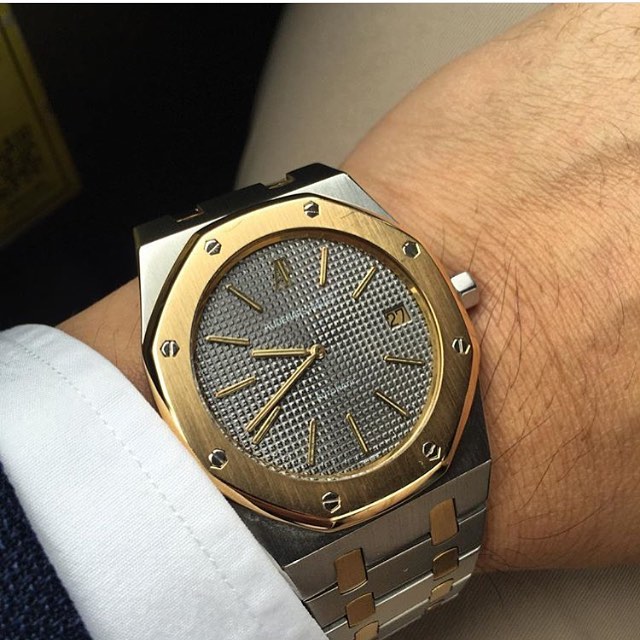
was first launched in 1972, it immediately captured the attention of all watch lovers in the world. There are 2 important aspect to this watch. Firstly for its truly original styling, the work of Gérald Genta, the incomparable designer who imagined its octagonal bezel, held in place by eight visible screws, and its integrated bracelet. Secondly, because the Royal Oak was the first high-end sports watch. It went against the trend and made this watch in steel, a metal that would go on to win new respect. The brand gave its Royal Oak a self-winding movement with calendar function. It took its innovative shape from a porthole on HMS Royal Oak, the ship that would also give it its name. The brand’s wider interest in trees came later. In the photo, features a very early 2nd generation Royal Oak in two tone 18K and Stainless steel

This is a Speedmaster Moonphase, which was made in the late 1980s. Omega only produced a thousand of these (ref ST3450809)
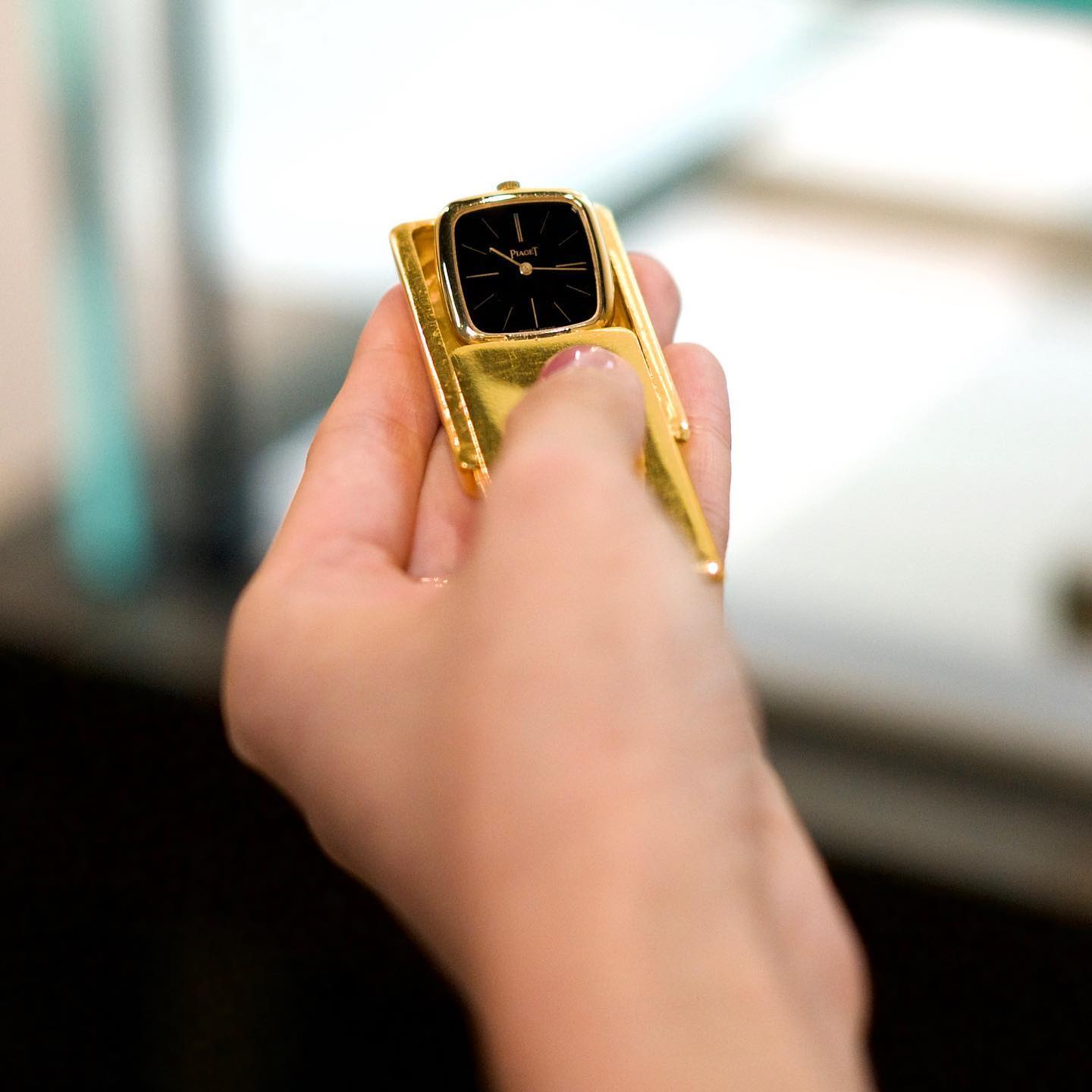
The history of Piaget in secret watches started in the 40’s. This particular watch was formerly owned by Andy Warhol. 24-carat gold (ingot) and 18-carat gold (habillage) Piaget 9P ultra-thin hand-wound movement.

It had a case measuring 40mm in diameter. The movement also changed a bit and became Rolex caliber 1575. Later, the GMT-Master 1675 evolved with a caliber 1570 inside, the base caliber for this self-winding movement is 1570 and was left engraved on the bridge of caliber 1575. There also have been production numbers of the 1675 GMT-Master with caliber 1565 but it is unclear when these were used and in which particular models. The 1675 GMT-Master was in production for a long time, from 1959 till approximately 1980. Here is one from the 70s.
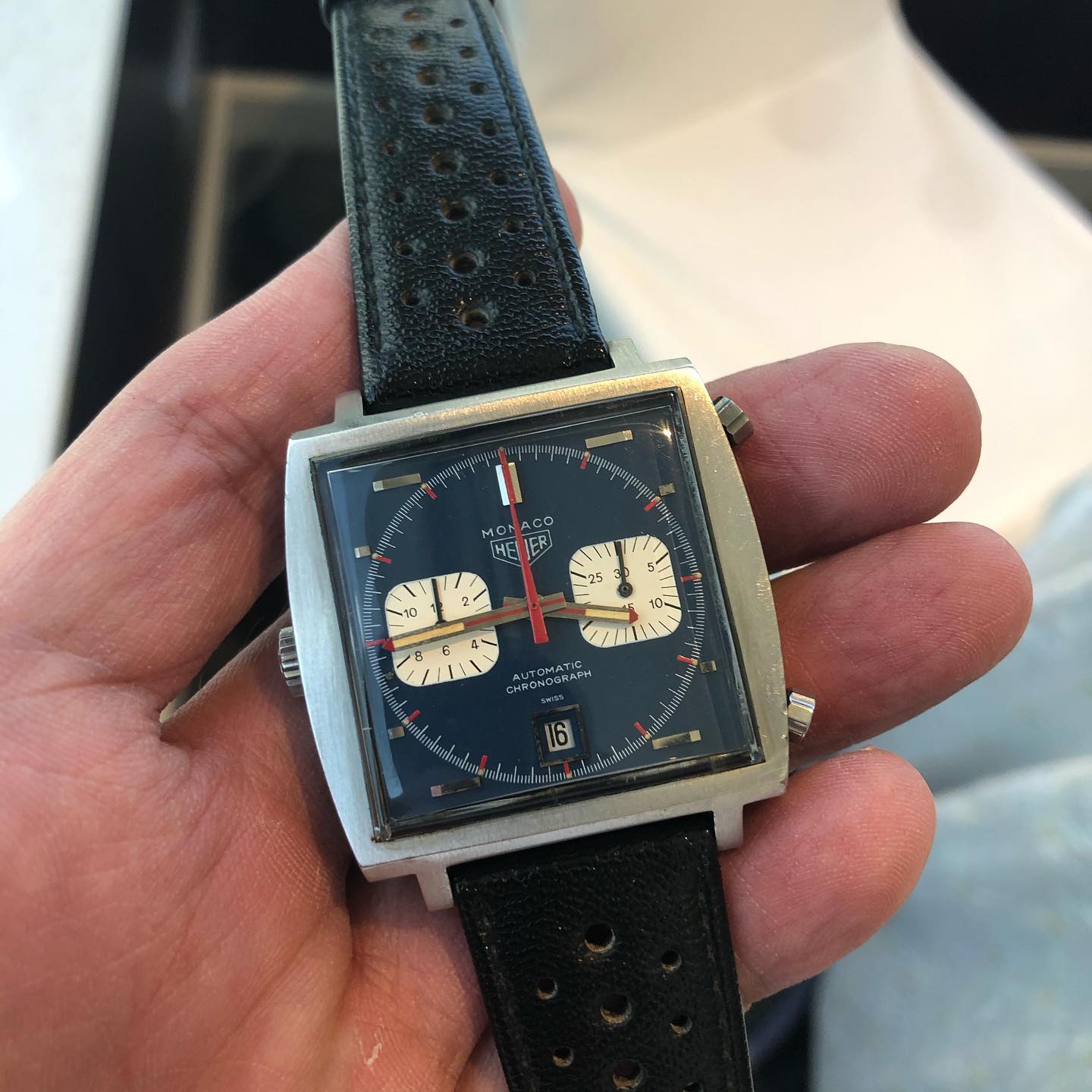
- Worn by Steve McQueen in the racing film, Le Mans.
- In 1971, Steven McQueen starred in the racing “documentary styled” movie Le Mans; directed by Lee Katzin.
- This is before the trend of brand using movies to build their presences; and the production team went out to purchase these watches at retail price.
- McQueen took one Monaco and gave it to his chief mechanic; thanking him for keeping him alive for the past few months.
- At first, Haig Alltounian didn’t want the watch but McQueen told him he had already done the engraving on the case back, he couldn’t give it to someone else.
- The Monaco watch was first introduced in 1969, bearing a few significant details, first and foremost is the case shape, being square isn’t the easiest to make it water resistant; but they’ve managed to get the Monaco to withstand water to 100m.
- 39mm stainless steel case.
- The movement was the legendary cal 11. In 1967 a group of companies; Breitilng, Hamilton-Buren, Heuer, and Dubois-Depraz— joint effort to develop a new automatic chronograph movement.
- In 1969, they unveiled the Cal. 11. The Heuer Caliber 11 was the company’s first and arguably most famous automatic chronograph movement.
- This watch is up for auction on December 12th at Phillips auction (New York).
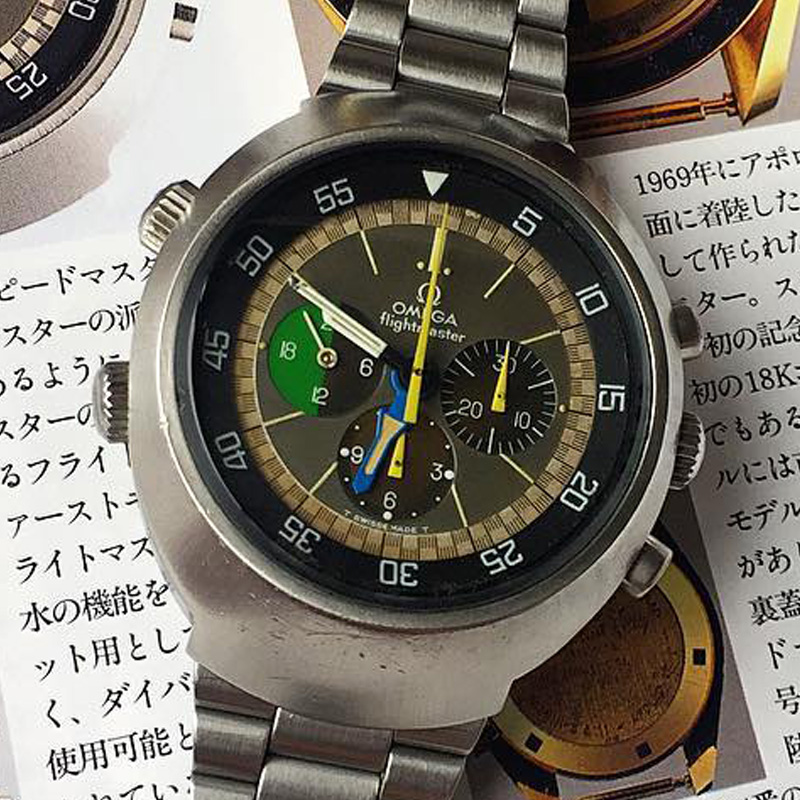
The Omega Flightmaster, a variant from the Speedmaster line. Introduced in 1969, the Flightmaster features the most comprehensive functions with dual TimeZone, chronograph, day and night, etc. The version shown here is the Cal.910 which has the day & night indication whereas the later Cal.911 has the sub seconds indication. Manual winding chronograph in stainless steel.
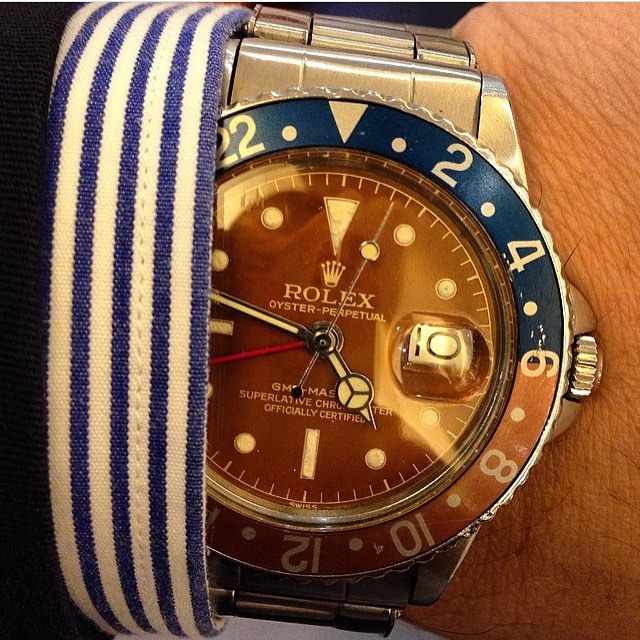
The Rolex GMT-Master watch was originally designed in collaboration with Pan American Airways and issued by the airline to their crews on long-haul flights. The original GMT Master watch has a 24-hour display fourth hand complicationdirectly linked to and displaying the same time zone as the standard 12-hour hand. This GMT hand enabled the crews to set the watch to GMT or another time zone, and using the rotatable 24-hour scale bezel set to the correct offset a second time zone could be read. GMT or UTC is the time zone that is required for all aviation planning, weather forecasts, schedules and other paperwork.
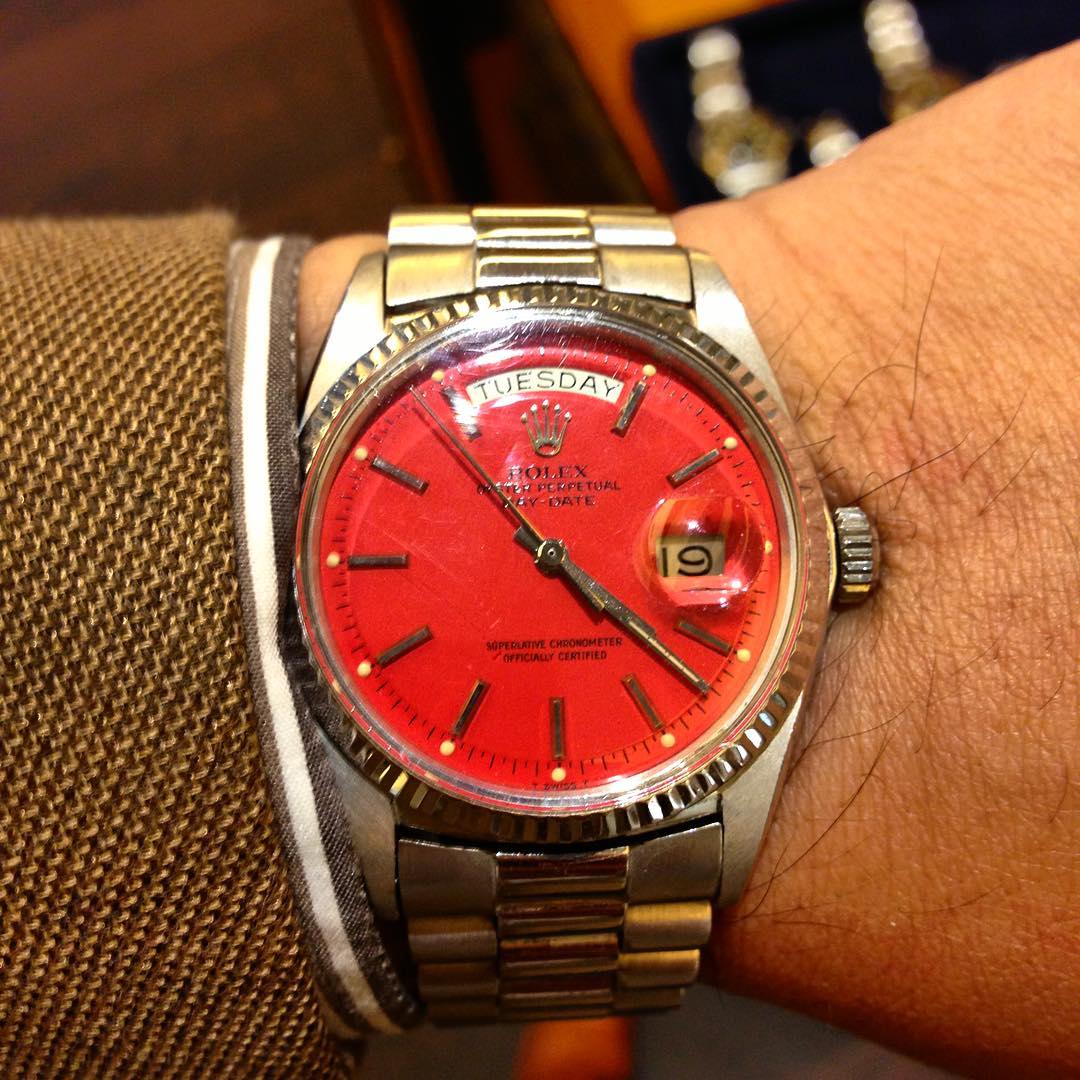
Vintage Platinum Rolex President, stella dial
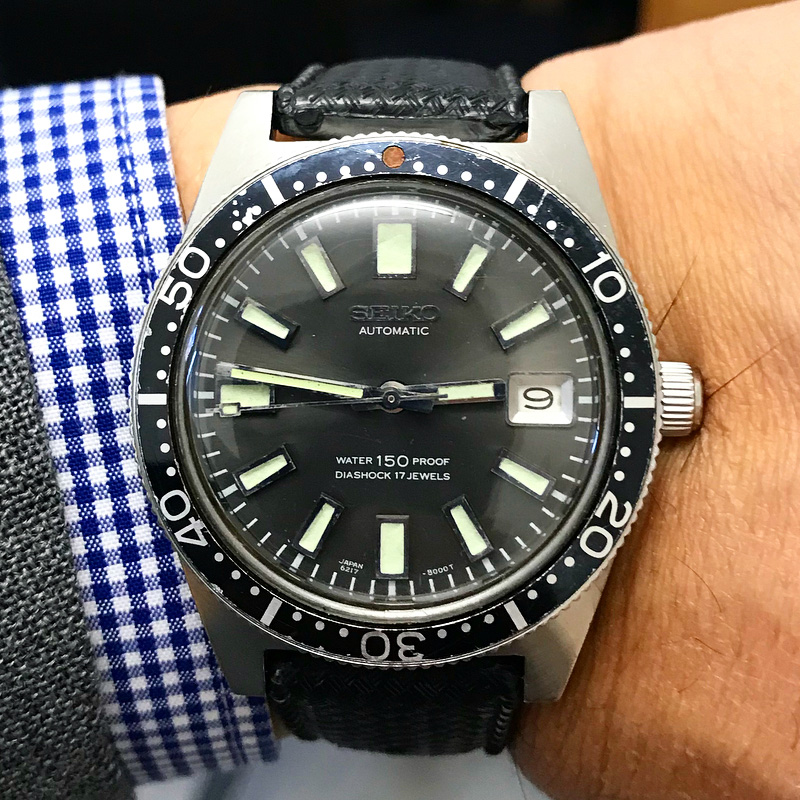
This was Japan’s first diver’s watch. It was an automatic 150m Diver’s. The launch of this model marked the start of Seiko’s pursuit for ever greater reliability and safety. In 1966, the watch proved its reliability and precision on the 8th Japanese Antarctic Research Expedition. The 6217-8000/1, which is better known as the Seiko 62MAS (autoMAtic Selfdater)Stainless steel case at 37mm. It featured a date function, a bi-directional bezel, stronger luminosity on the hands and indexes, and a big crown. It has a screw down case back but non-screw down crown. The Seiko 62MAS was rated to 150M of water resistance. While this doesn’t seem like a lot by today’s standard, it was Seiko’s deepest rating at the time (prior watch was rated only to 50M). The 6217-8000/1 caliber is a 18,000bph automatic, non hacking seconds with quick set date.
